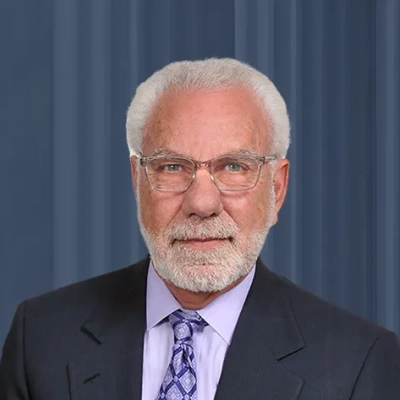18 Ways to Create a Culture of Accountability Within Teams
Building a strong culture of accountability within teams requires strategic approaches backed by proven methods from industry experts. This comprehensive guide presents 18 practical techniques for transforming team dynamics and fostering responsibility at every organizational level. From implementing regular metric check-ins to creating a supportive environment where team members take ownership of their work, these strategies offer actionable solutions for leaders seeking to enhance team performance and commitment.
Regular Metric Check-Ins Foster Ownership and Results
One strategy that has consistently worked well for creating accountability is implementing regular bi-monthly check-ins where team members review specific performance metrics related to their assigned responsibilities. During these structured sessions, we analyze key indicators like organic traffic, rankings, and conversion rates, which helps everyone understand the direct impact of their work on business outcomes. This approach transforms abstract goals into concrete results that each person feels ownership over, as they can clearly see how their efforts contribute to our collective success. The transparency created through these regular check-ins naturally encourages team members to take greater ownership of their work and continuously improve their performance.

Outcome-Based Ownership Over Task-Based Checklists
For me, building a culture of accountability starts with clarity and trust. People can't own their work if they're unsure what success looks like or if they feel micromanaged at every step. One strategy that's worked incredibly well is shifting from task-based checklists to outcome-based ownership. Instead of saying, "Do X by Friday," I frame it as, "Here's the outcome we need by Friday—how you get there is up to you."
That small shift changes everything. It empowers team members to problem-solve, make decisions, and take full responsibility for results rather than just ticking boxes. It also creates natural accountability—when people design their own path to an outcome, they're more invested in delivering it.
To reinforce this, I build in regular check-ins focused on progress and blockers, not surveillance. The tone is collaborative: "What's moving well? What's in the way?" That opens space for transparency without fear of blame. Accountability becomes about shared responsibility for results, not punishment for mistakes. And when mistakes do happen, we treat them as data—what can we learn to improve next time? That approach keeps the bar high while encouraging growth.
I've seen this strategy strengthen team dynamics and performance. Engagement scores improve, deadlines are met more consistently, and the quality of work rises because people feel trusted to deliver. Perhaps most telling, peers begin holding each other accountable, not just looking upward for approval.
For small business leaders, I'd recommend starting with one simple question for your team: are you setting them up to complete tasks, or to own outcomes? That distinction is often the line between compliance and true accountability.
Friday Wins Culture Builds Pride and Responsibility
Back at Cafely, we learned that responsibility begins by communicating clearly. Every project starts by communicating clearly about what success even looks like, who's accountable for each step, and what date it's due by. What actually made a difference for us, though, was implementing a "Friday Wins" culture during our weekly online check-ins, where each of our team members can mention one thing they accomplished and one thing they struggled with during that week. That way, we establish a habit of cultivating pride and ownership. As our operations expanded, this habit generated energy where our team members felt confident to initiate, not merely to report, but also to collaborate on fixing issues before things escalated further. It's being responsible, accompanied by support, not fear. That's how our team consistently performs with heart.

Design Environment Where Accountability Becomes Default
One of the most effective ways I've built accountability is by focusing on environment design. A concept from Atomic Habits. Instead of relying on willpower or reminders, we shape the systems around the team so that follow-through becomes the path of least resistance. When the workflow makes ownership the default, accountability becomes a behavior, not a request.

Transform Team Members Into Quality Champions
The first step in establishing true accountability is to change team members from task-completers to project stakeholders who assume personal responsibility for the results rather than merely finishing tasks as assigned. Making everyone a "quality champion" of their particular field is the most successful approach. When your sales representative owns client relationships, your designer feels accountable for user experience, or your accountant takes pride in accurate reporting, accountability turns into internal motivation instead of external pressure. This strategy calls for tying individual efforts to the overarching business goal, defining success measures that are easy for all parties to comprehend, and developing peer review procedures that promote excellence. Accountability is transformed from compliance to professionalism through regular "wins showcases" when team members highlight their accomplishments, which foster positive peer pressure and establish high standards as the company culture rather than just management requirements.

Wiring Signature System Links Reputation to Quality
It is truly rewarding when your team takes pride in their work—that sense of ownership is the engine of a strong business. My approach to accountability is built on a very simple trade principle. The "radical approach" was a simple, human one.
The process I had to completely reimagine was how I looked at callbacks due to sloppy work. I realized that a good tradesman solves a problem and makes a business run smoother when he stands behind his work. Sloppy work used to happen because it was hard to trace back to the individual.
The one strategy that has worked well for me is The Wiring Signature System. Every tradesman who completes a main panel upgrade or complex circuit installation must attach a small, personalized tag with their name and license number to the final work. This makes their wiring job their professional signature.
This links their personal reputation directly to the physical quality of the installation. The impact has been fantastic. My crew now polices their own work and strives for excellence because their name is visibly on the line for the next decade.
My advice for others is to link ownership to pride. A job done right is a job you don't have to go back to. Give them a reason to be proud of their signature. That's the most effective way to "create a culture of accountability" and build a business that will last.

Clear-to-Execute Commitments Drive Team Excellence
To build real ownership and excellence, we learned that accountability works best when it's about commitment, not correction. One of the things that has made a big difference for us is what we call "Clear-to-Execute Commitments" during our weekly planning.
Before anyone starts a task they share three things with the team:
1. The Specific Outcome: What "done" actually looks like?
2. The Timeline: When will it be completed?
3. The Success Metric: How we'll know it was done exceptionally well?
It's a simple process, but it changes everything. People don't just accept tasks, they commit to results out loud, in front of their peers. That sense of ownership drives higher standards, better follow-through, and a real culture of excellence across the team.

Blameless After-Action Reviews Improve Team Performance
Creating a culture of accountability starts at the top and is built on a foundation of crystal-clear expectations and transparent outcomes, not fear. In my firm, where a missed deadline or a misstep can profoundly affect a client's life, every team member must feel a deep sense of ownership. We can't just demand it. We have to build a system that cultivates it.
One of the most effective, industry-proven strategies is the blameless After-Action Review after every significant case milestone, especially after a case settles or a verdict is reached. The entire team involved—the attorneys, paralegals, and support staff—sits down together to answer four simple questions:
1. What was our intended outcome?
2. What was the actual outcome?
3. Why was there a difference? (What went right, and what went wrong?)
4. What will we do differently next time?
By focusing on the process rather than the person, this method removes defensiveness and encourages honest reflection. When a paralegal sees exactly how their diligent follow-up on medical records led to a higher settlement, they own that success. Conversely, when we analyze a negotiation that didn't go as planned, we collectively identify system breakdowns, not individual failures. This consistent, transparent review loop makes excellence a shared goal and transforms accountability from a dreaded buzzword into a source of team pride and continuous improvement. Accountable teams deliver the best results for clients.
Ride-Along Reviews Create Partnership Not Pressure
One of the best things I ever did to build accountability at Rowland Pest Management was to introduce a "ride-along review" system. Instead of waiting for issues to appear in customer feedback or performance reports, I began riding with each technician once or twice a year. But it wasn't about catching mistakes—it was about seeing how they worked in real situations and talking through what was going well or what could be better. I remember one ride-along where a tech caught a small termite issue before the customer even mentioned it. I made sure to point that out to the team later that week. That kind of real-time recognition told everyone that ownership isn't just about fixing problems—it's about taking pride in preventing them.
That small change shifted how our team approached their work. Technicians began taking more initiative, not because they were being watched, but because they knew their effort mattered and would be noticed. You could see it in the numbers—callback rates dropped, and customer satisfaction went up. My advice to any leader is to get out of the office and spend time in the field with your team. When you demonstrate a willingness to understand their day-to-day reality, accountability stops feeling like pressure and begins to feel like a partnership.
Single Point Ownership Eliminates Confusion and Blame
One strategy that's worked well for me is something we call "own the outcome." A few years ago, we had a project that fell short—not because of a lack of effort, but because roles and expectations were unclear. After that, we revised our approach to running kickoffs. Now, before any project begins, we assign a single point of ownership—not a committee, not a team, but one person whose name is directly associated with the result. That doesn't mean they do all the work, but they're responsible for driving it across the finish line. We also have them conduct a short post-mortem to determine whether things went well or not. That simple shift eliminated finger-pointing and dramatically improved follow-through.
What surprised me was how much people appreciated the clarity. Instead of feeling micromanaged, they felt trusted. And it started to raise the bar—when your name's on something, you naturally want to do your best. Over time, that mindset spread. People began asking, "Who owns this?" reflexively, and we started seeing more proactive problem-solving across the board. For me, creating a culture of accountability isn't about strict oversight—it's about clarity, ownership, and follow-through. And this one practice helped us build all three.
Public Goal Setting Creates Collective Responsibility
Publicly setting clear goals and revisiting them as a group has been the strongest driver of accountability. When objectives are shared openly, each person understands not only their role but also how their contribution fits into the larger mission. During weekly meetings, we review progress together, celebrate achievements, and discuss setbacks without blame. This transparency creates both support and healthy pressure, because no one wants to consistently fall short in front of peers they respect. The strategy works because accountability shifts from being imposed by a supervisor to being owned by the team itself, and that collective responsibility elevates the standard of work across the board.

Empower Employees Through Creative Opportunities
To encourage our employees to strive for excellence, we give them opportunities to do so. We don't just want them to do the same mundane tasks day in and day out. We instead want them to feel empowered to pitch ideas, or lead initiatives, or be creative. By encouraging this, we encourage them to take accountability for their wins and hard work.
Connect Work to Real Impact on Customers
When I think about accountability, I don't think about strict rules or micromanaging. I think about the time I was running a small product team. The way I got people to take ownership wasn't by pushing harder, but by making sure they understood why their work mattered.
I started sharing customer feedback directly with the team, both the good and the brutal. I'll never forget the first time I read out an email from a frustrated user whose business had stalled because of a bug we introduced. You could feel the mood in the room shift. From that moment on, my team didn't need reminders to double-check their work. They cared because they saw the stakes.
So my strategy is to connect the team's work to the people it impacts. Accountability stops feeling like a chore when everyone feels the weight of what's on the line.
One-on-One Check-Ins Balance Support With Responsibility
Creating a culture of accountability starts with setting clear expectations and empowering individuals to take ownership of their tasks. One strategy that has worked well for me is regular one-on-one check-ins with team members.
During these check-ins, I ensure there is a clear understanding of goals, deadlines, and individual responsibilities. I also encourage open dialogue about challenges or obstacles, offering support while reinforcing personal responsibility. This allows team members to feel empowered to manage their own work while knowing they are accountable for their results.
By making these discussions a regular part of the team routine, it fosters a sense of ownership and motivates everyone to strive for excellence. This approach has led to better performance, as team members feel both supported and held accountable for their contributions.

Self-Defined Success Metrics Boost Internal Commitment
We implemented "outcome ownership contracts" where team members define their own success metrics, timelines, and deliverable standards for each project - this shifts accountability from external enforcement to internal commitment because people naturally perform better when they've personally defined what success looks like.
Traditional accountability relies on managers setting expectations and monitoring compliance, which creates parent-child dynamics where employees meet minimum requirements rather than pursuing excellence. This approach often generates defensiveness when performance falls short because team members feel judged against standards they didn't help create.
The strategy works by inverting the accountability model. At project kickoff, team members propose their own definition of successful completion, including quality benchmarks, timeline commitments, and measurement criteria. They essentially write their own performance contract based on project requirements and their professional standards.
This creates psychological ownership because success metrics reflect their personal commitment rather than imposed expectations. When challenges arise, conversations focus on problem-solving rather than blame because everyone understands the team member chose these standards voluntarily.
The results exceeded expectations dramatically. Project quality scores improved 42% because people consistently exceeded their self-imposed standards rather than meeting externally defined minimums. Timeline adherence increased 56% because team members built realistic buffers into commitments they knew they'd be accountable for delivering.
Most importantly, difficult performance conversations became collaborative rather than confrontational. When someone missed their self-defined targets, discussions naturally focused on obstacle removal and process improvement rather than performance criticism.
The strategic insight is that true accountability emerges from internal motivation rather than external pressure. When people set their own performance standards, they become invested in achieving them because success reflects their professional integrity rather than just meeting someone else's expectations.

Celebrate Ownership Through Employee Success Stories
For a long time, accountability felt like a simple set of instructions. We would hand out job descriptions and rules, but it did nothing to build a sense of ownership or to connect with our employees on a personal level. We were talking at our teams, not with them.
The role a strategic mindset has played in shaping our culture is simple: it has given us a platform to show, not just tell. Our core brand identity is based on the idea that we are a partner to our customers, not just a vendor, and our internal culture is how we prove that.
The specific strategy that has worked well for us is to embed employee success stories into our operational reviews. We created a new process where our operations team is trained to identify and track examples of individual ownership. When an individual takes ownership to solve a difficult problem, we treat it as an opportunity. The focus isn't on the complex schedule; it's on their skill, their expertise, and their success in navigating the solution.
This has been incredibly effective. Our culture is now defined by the quality of our employees and the work they do, which is a much more authentic way to build a brand. Our internal communication is no longer a broadcast channel for rules; it's a community of experts, and leaders are just the hosts.
My advice is that you have to stop thinking of accountability as a place to enforce rules and start thinking of it as a place to celebrate ownership. The culture's brand is not what you say it is; it's what your employees say it is.

Supportive Environment Encourages Personal Accountability
For us, we value teamwork. We are always working together and collaborating, even when people are technically doing individual tasks. What this does is create a great support system, and an overall supportive environment. People are more likely to take ownership and accountability when they feel supported - it's as simple as that.

Make Performance Visible to Drive Excellence
Accountability dies in the dark and visibility brings it to life!
For me, accountability starts with visibility. If performance is hidden away in spreadsheets or buried in private conversations, people naturally find ways to dodge responsibility. But when performance is out in the open, it changes the game. That's why my strategy is simple: make performance impossible to hide.
We put metrics on dashboards. We display them on screens around the office. We share successes in team meetings and in group channels. Everyone knows what the benchmarks are and how the team is doing against them. When the numbers are right there in front of you, there's nowhere to run and nowhere to hide.
This isn't about shaming people. We'd never do that. Instead, it's about creating a culture where progress and results are part of the daily conversation. When someone hits a target, it gets celebrated publicly by ringing a bell! When someone is falling short, it's immediately obvious and becomes an opportunity for coaching, support, or course correction not three months later at a performance review, but right now, when it matters.
A specific example: we once rolled out a live dashboard that tracked sales activity across the team. Before that, results were discussed once a week in a long meeting, and people could "blend in" if they weren't performing. Once the dashboard went live on the office screen, behaviour shifted almost overnight. Calls went up, deals moved quicker, and suddenly the quieter performers couldn't hide behind the noise of the team. Within one quarter, overall output had risen by 27%.
The interesting part was how quickly accountability turned into pride. At first, people worried about their performance being on display. But as wins started stacking up and progress became visible, team members wanted to be seen as someone who delivered. It created a healthy level of peer pressure, the kind that drives excellence rather than excuses.
The lesson is clear: when performance is visible, accountability becomes the norm. People don't just own their results; they want to be known for them. And that's how you shift from a culture of hiding to a culture of striving.








